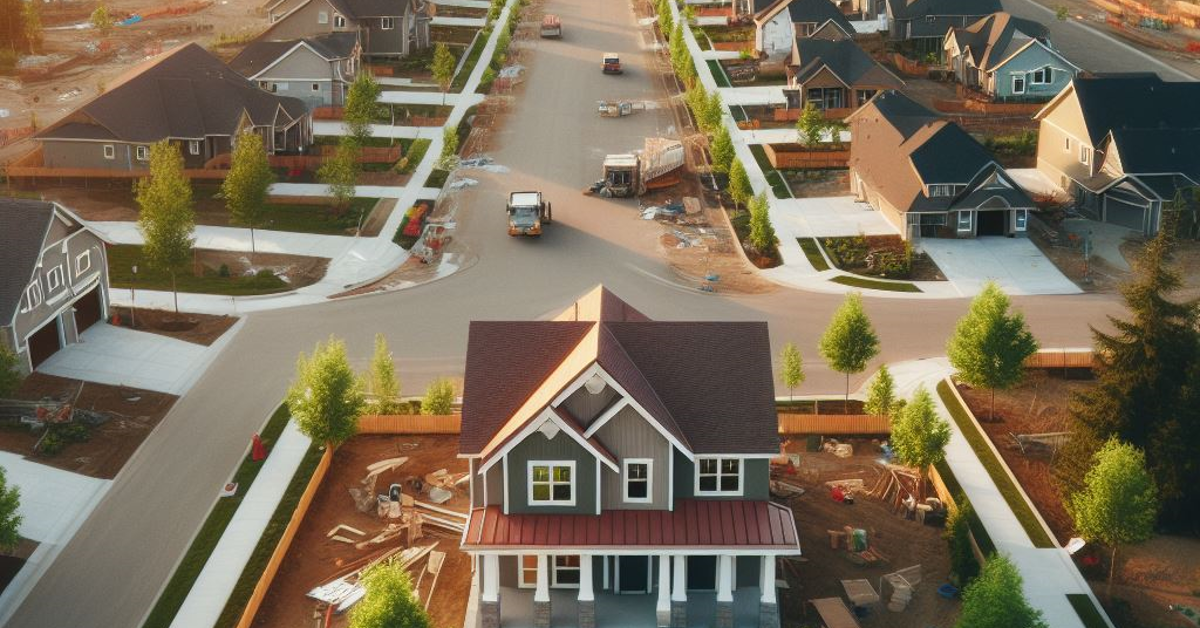Update Dec 14, 2024: Added Newsletter Email Archive at End of Post.
As they say, hindsight is 2020. Under-investment in skilled trades has been a serious problem in Ontario (and all of Canada) for quite some time now. Something that will make the problem worse is that 700,000 trades people across Canada will be retiring between 2019 and 2028. We will have to find ways to replace those workers and more if we want to hit our ambitious housing targets. The Ontario government has created a plan to build 1.5 million homes in the next decade with the federal number totaling 10.5 million homes. In recent times due to a lack of trades supply, the labour costs to build housing has absolutely skyrocketed, which is great for wages, but not so great for building houses efficiently, affordably, and at a large scale. If we take a look back at history, it’s not so hard to see how we ended up with the shortage of trades people we are currently experiencing.
In the mid to late 1990s the Ontario government eliminated mandatory grade 7 and 8 carpentry and home economics classes (e.g. sewing, culinary, etc.). This was at a time when there were many cuts being made to education and many changes in the way education was administered in Ontario. A greater amount of standardized testing was being put into place as well as a compulsory curriculum where all students would learn the same “core” concepts. This “streamlining” of education made it easier to administer education (and less expensive) since most students would be learning the same things, but it also meant reducing students options in middle school and high school. Students were no longer being introduced to skilled trades in middle school which meant that when those same students entered high school, they would often just stick to the things that were familiar to them. Attendance in grade 9 elective carpentry and shop courses began to decline and this lead to many of those courses being removed from schools entirely due to under enrollment.
To bring a personal example into this post. At my high school I remember seeing the garages and warehouses of the school building that would have in past years housed (auto) shop class or carpentry. They were at some point replaced with arts and drama studios. Not to say that we don’t need artists and performers, it would be a rather bland world without them. But as someone who did not have much interest in those things and found myself more interested in how things are put together and more recently learning about cars on my own time (with lots of help from YouTube). It would have been nice to have had the option to introduce myself to those things back in high school and I think I would have really enjoyed it.
The only mention of skilled trades I remember was during my high school graduation ceremony, the superintendent basically said, “think about a trades career, you’ll make lots of money.” This was in stark contrast to the amount of fairs and events we would have with every Canadian and American University, often times coming directly to our school to recruit students. In this regard I have to consider myself lucky that my mother worked in construction and building maintenance, because she had amassed a good amount of power tools from her various jobs and absolutely any questions I had about using power tools, or how to properly sketch and design something, she had answers for. This meant that I had the opportunity to learn how to design and build things and I built most of the furniture that I used during my university studies and I learned valuable skills in the process; I also learned about economies of scale (it was not cheaper to DIY). However, now I feel confident in repairing things and learning about other trades. If the house I grew up in wasn’t big enough, or my mom worked in a completely different industry, I likely would not have even thought to try to learn how to use a table saw.
By removing these types of courses from the curriculum it makes sense that university admissions would go up. As would the emphasis on grades and thus grade inflation as university became more competitive and trades school admissions did not keep pace. Students were all being steered towards a knowledge related education or entering the workforce immediately, there was not much in between anymore. I believe that this emphasis on universities also had a secondary effect; devaluing university education. Universities began to admit more and more students to meet the demand for their programs, and it was also around this time that the cost of university began to skyrocket as did student loan debt. Many student were attending university because they did not feel there was another option or didn’t have enough information about their options to make an alternative choice, and I’m not just speculating when I say that. This means many students taking on student debt and going to university for an additional 4 years because you feel like you “have to” and then ending up with a degree that can’t land you a job. We have spend decades wasting human capital and real capital by not creating opportunities to discover diverse career options in high school. We are also continuing to drive up university costs due to increase demand (domestic and international), so why compete on a cost level as an institution when students can just take out loans to fund education and people are practically begging you to take their money. The scales are extremely unbalanced and as the past 30 years of relatively slow housing construction have shown, it may not have been a good idea to stop investing in early education for trades.
I’ve painted a pretty bleak picture, but things aren’t all bad. The Ontario government, however unpopular they might be at times, have spent over $1 Billion in the past 3 years addressing the shortage of skills trades workers, and they are seeing results. In the 2023 apprenticeship registrations have increased from 21,971 to 27,319 a 24% increase from 2022. They also rebranded the Ontario College of Trades with Skilled Trades Ontario, breathing some new life into the corporation with the new injection of funding. Skilled Trades Ontario has been able to advertise more and provide more skilled trades fairs that high school students can attend. The government has also made a change to the Ontario curriculum mandating that all Grade 9 and 10 students starting in September 2024 will be required to take at least 1 Technological Education course, which focuses on opportunities in STEM related technician jobs or skilled trades. Prior to this 39 percent of students had enrolled in a tech ed course and 63 percent were male, making this course mandatory will also introduce women who are under-represented, like my mother was, to a skilled trades careers.
Writing this post I was happy to discover that the skills trade shortage is an issue that is being addressed as we speak, and changes to provide students more options to learn and discover are very welcome changes. I’m not certain that we will be able to accomplish the goal of building 1.5 million homes in the next 10 years. But there does appear to be a surprisingly well thought out and robust plan to at least somewhat improve the skilled trades situation in our province. It’s going to be difficult to undo decades of underinvestment in our future workforce, but one step at a time I think we can get there.
All the best,
Oliver
Newsletter #5: Goal Setting, Housing Market Performance in 2023, Skilled Trades Crisis Blog

Happy New Year everyone! It’s about that time of year when people talk about what their goals are for 2024. I’m not a expert on these things but I did want to quote something that resonated with me from a book which I would strongly recommend called Atomic Habits. Author James Clear says, “you don’t rise to the level of your goals, you fall to the level of your systems.” Don’t focus too much on the goal itself, focus on scheduling, limiting the number of goals you have and creating strong systems that will make it easy and fun to accomplish your goals. Checking in with your goals every quarter or so and seeing what’s working and what isn’t and maybe re-evaluating some goals all together is important to do as well. Setting goals and prioritizing is equally about choosing what you are NOT going to spend your time on, as what you DO want to spend your time on. Go out there and build some great new systems into your life, and if you want to make big changes add one or two things at a time and slowly integrate them into your lifestyle, making a thousand changes at once can be a difficult proposition. Let’s get into the news!
Housing News:
- Toronto Real Estate Board Average Home Price for the Year 2023 (All of GTA):
- $1,126,604
- Represents a -5.4% price change from last year
- GTA saw lowest # of sales since late 90’s early 2000’s totaling 65,982 trades for the year
- Inventory of homes for sale remains elevated at 3.01 months
- Prices stable month over month at $1,085,000
- Fixed rate mortgages continue to decline alongside the 5-yr bond rate. Indicating a potential uptick in sales in the coming months beyond the usual seasonal increase in Spring
Market Performance as of close Friday Jan 5, 2024:
- S&P 500: 4,697.24 (-1.01% YTD)
- NASDAQ: 14,524.07 (-2.35% YTD)
- S&P/TSX Composite: 20,937.55 (+0.16% YTD)
Economic Indicators:
- Canada CPI Inflation Nov 2023: 3.1% NC
- Current BoC Benchmark Interest Rate: 5% NC
- Current Prime Lending Rate: 7.2% NC
- Unemployment Rate: 5.8% NC
This Weeks Blog Post:
How Under-Investment in Early Trades Education Contributed to Canada’s Housing Crisis:
- When & why the Ontario government stopped investing in trades education in middle and high school
- The result of this underinvestment in education on our housing supply
- Brief talk about my experience and opportunity to get exposure to trades
- What is being done about it, slow but steady improvements!
Read the full post here: https://oliverfoote.ca/2024/01/07/how-under-investment-in-early-trades-education-contributed-to-canadas-housing-crisis/
Thanks for reading and have a great week!
Oliver


